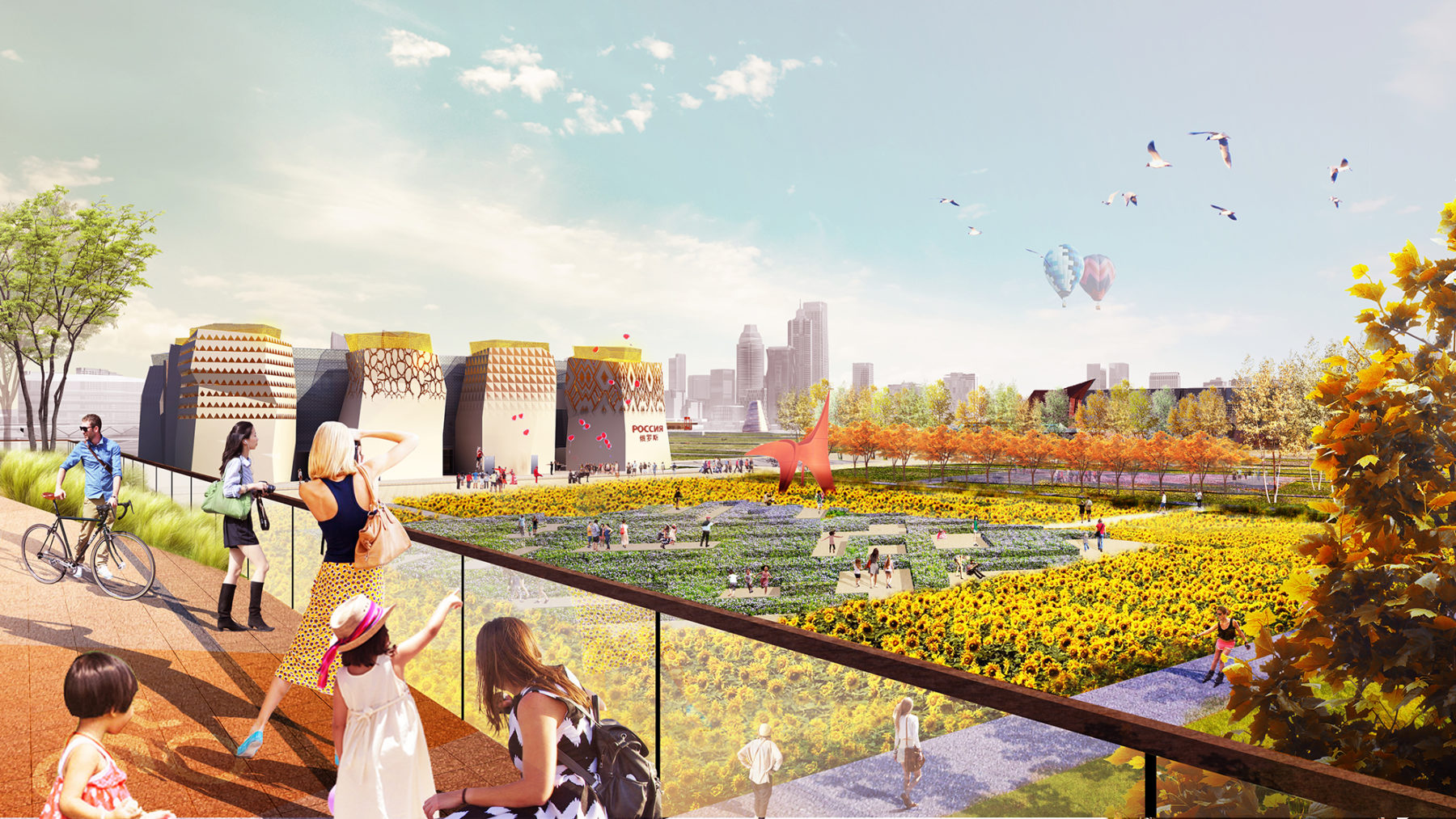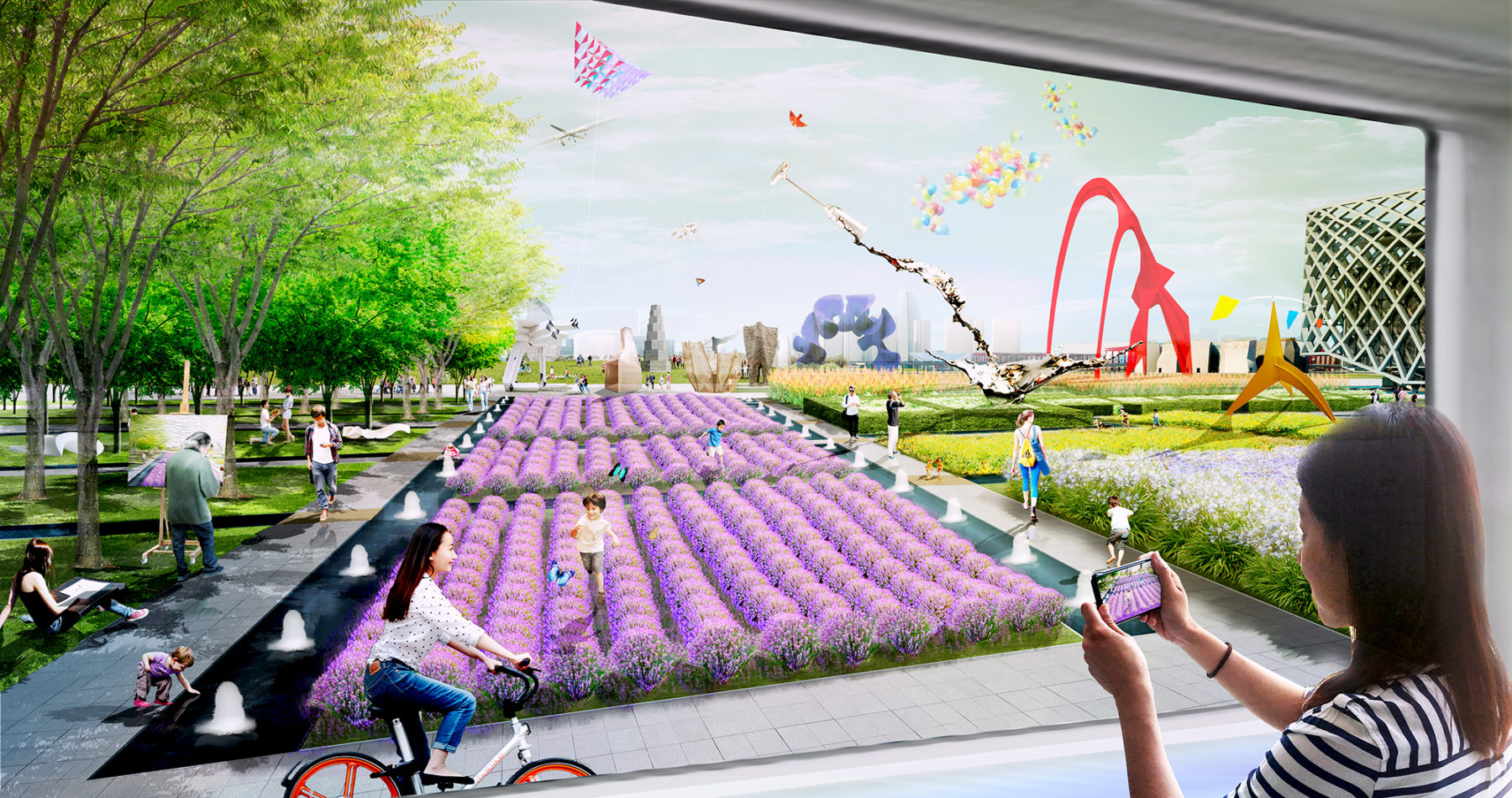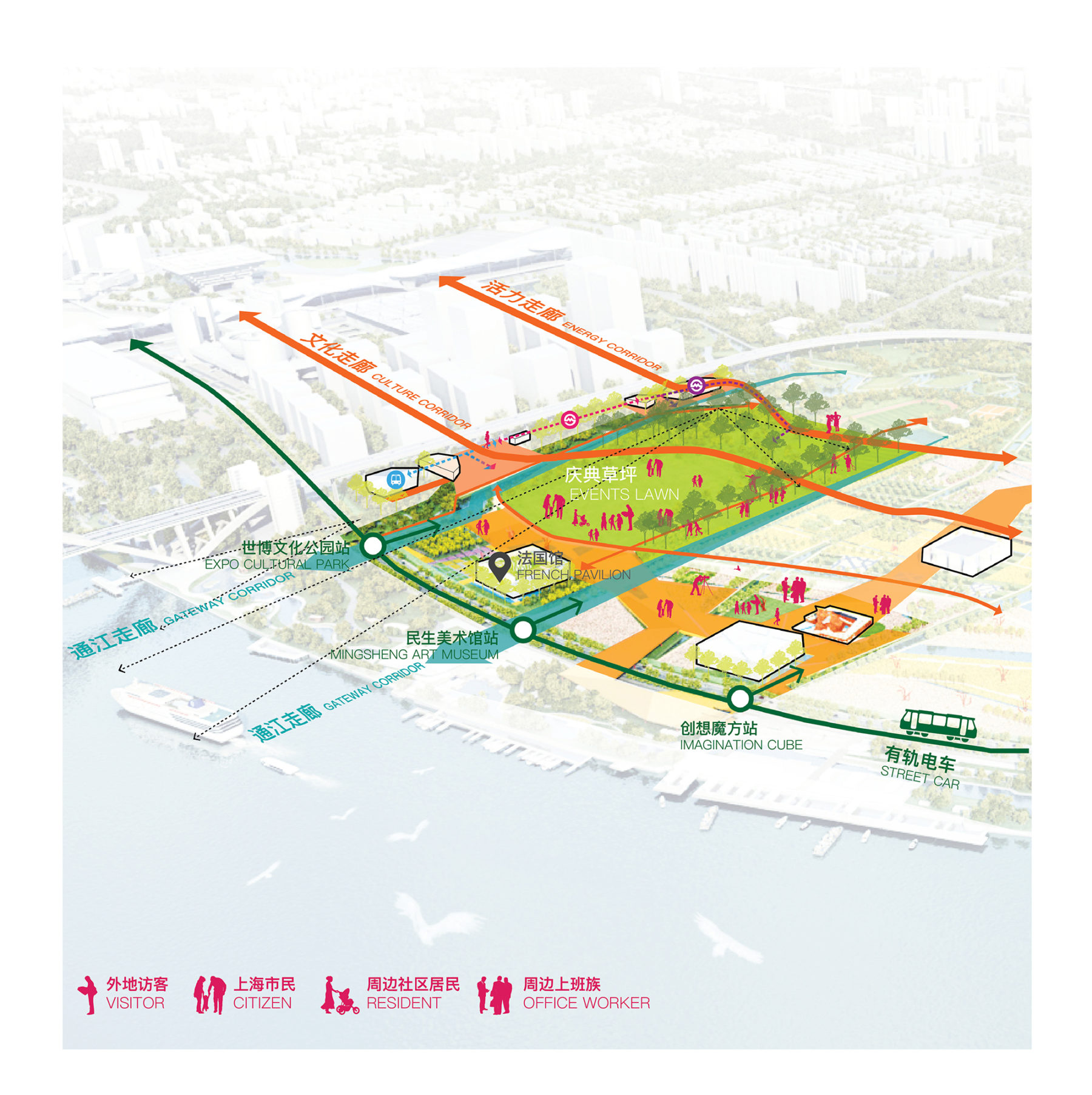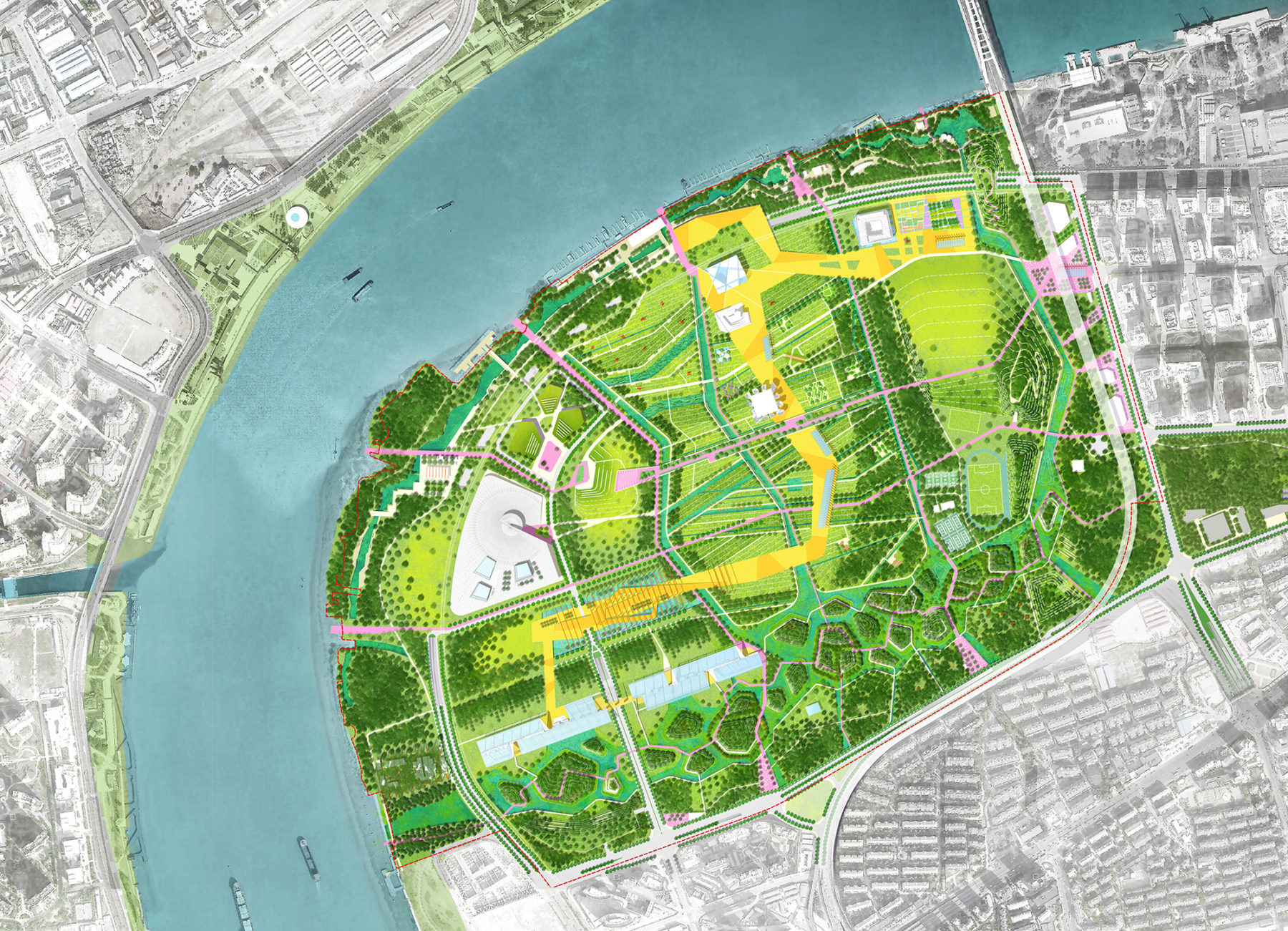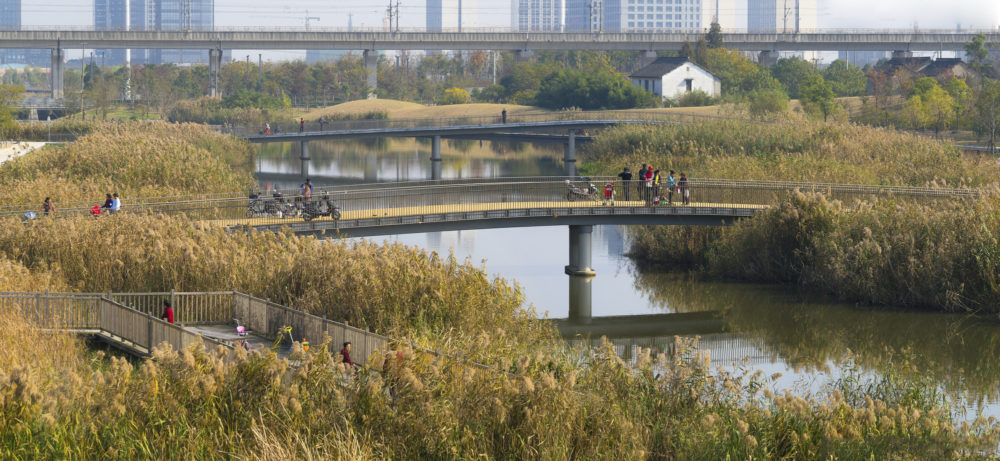
Jiading Central Park
Shanghai, China
 Sasaki
Sasaki
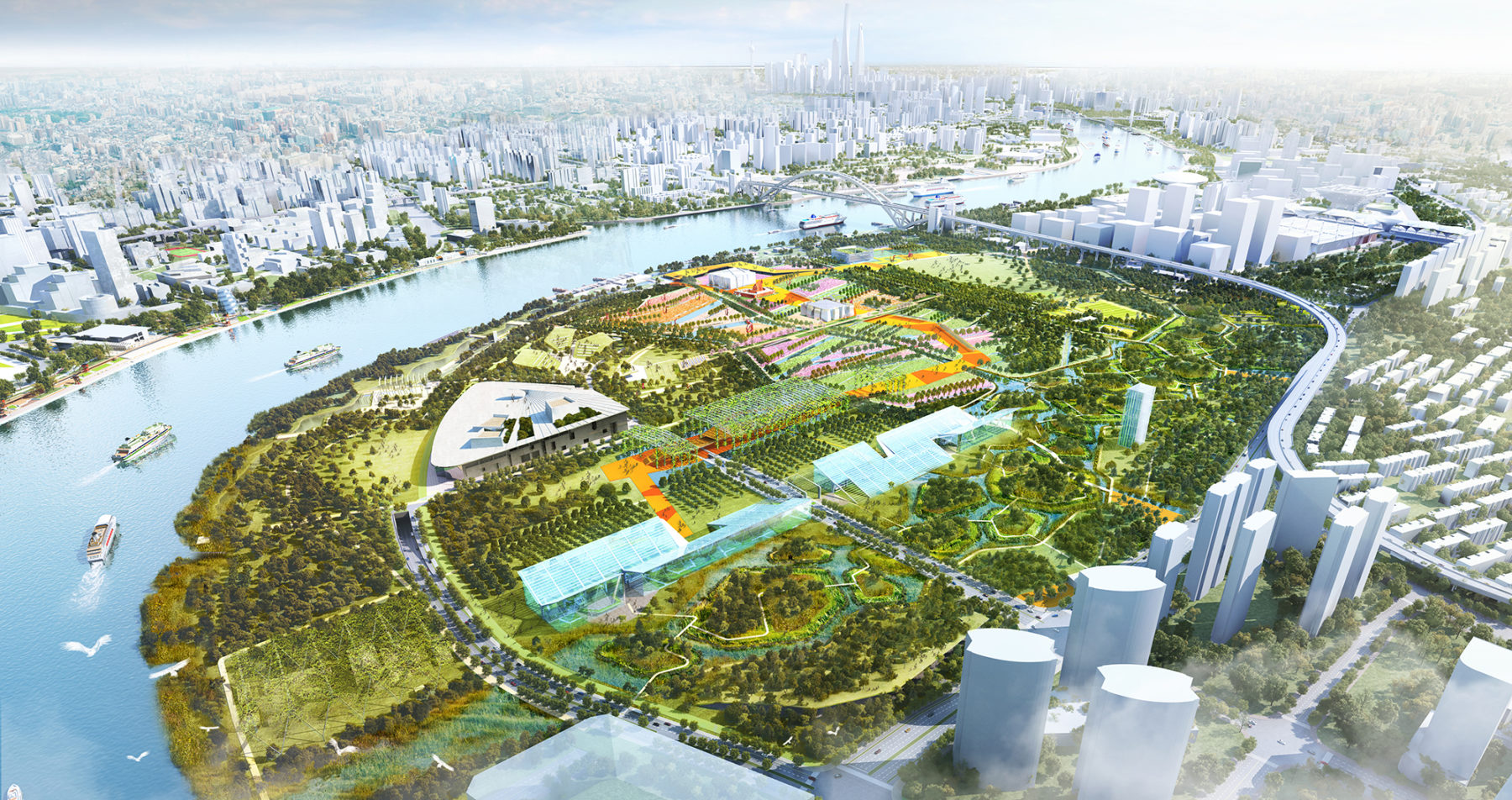
The EXPO Cultural Park is located in the Houtan area of the Pudong District in Shanghai. As a visual focal point from the west bank of the Huangpu River, this land has evolved over the decades: from natural wetland, to farmland with an expansive canal system for irrigation, to a base for heavy industry. The opening of the Shanghai EXPO 2010, the largest World Exposition in history, represents yet another new chapter of the site’s history. The EXPO focused on the concept of “Better City—Better Life,” and symbolized the beginning of the site’s post-industrial rebirth. After the EXPO, many of the pavilions were demolished, while a portion of the site was converted to active recreational programing.
In the Spring of 2017, the City of Shanghai decided to transform this site once again—this time, into the EXPO Cultural Park. As one of the two finalists in an international design competition, Sasaki proposed a design scheme which creates a unique destination—a gift for the people of Shanghai to enjoy. The park celebrates the unique ecological, cultural, and innovative contexts of the site’s history, and will be the largest riverfront green space in the City Center.
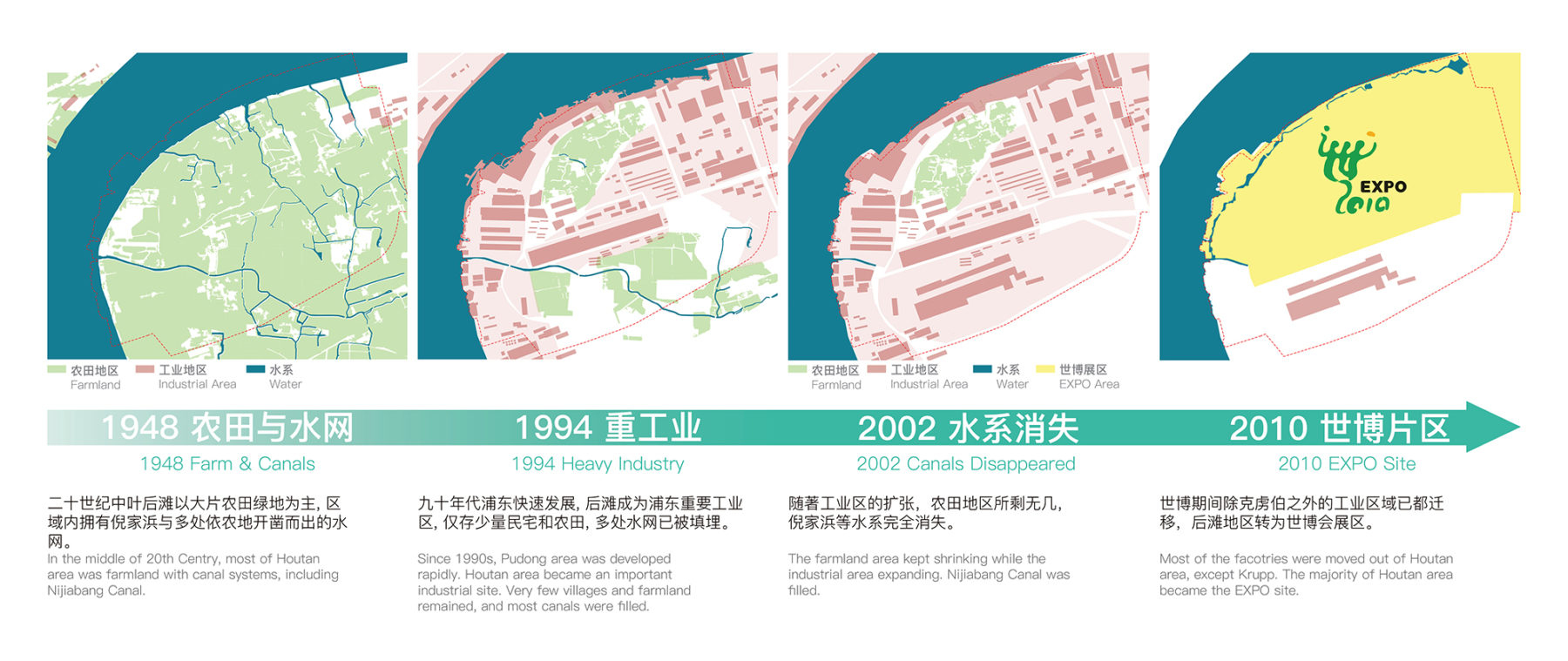
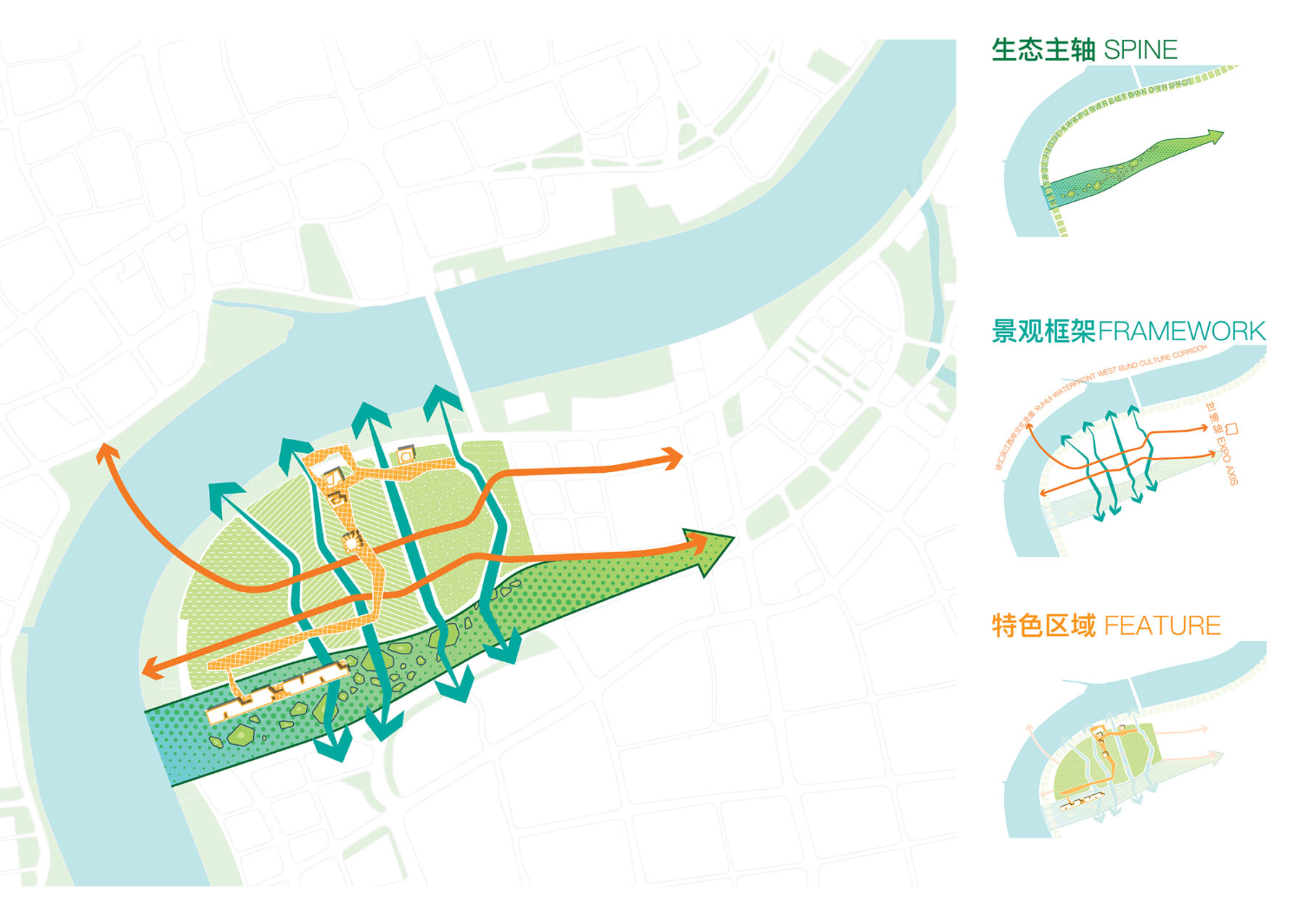
The design vision of the Cultural Park integrates and re-connects the site into the larger ecosystem and urban context of the city. This allows the creation of strong connections to existing riverfront parks and a proposed EXPO green corridor, as well as areas of mixed-use development and transit connections to surrounding urban districts. The site is aligned along an ecological “spine” which connects the Huangpu River with the open space corridor to the south. The designation of this spine focuses on restoring environmental quality in the area. The landscape framework for the park then builds upon this spine, linking the riverfront and the city, and the east and west banks of the Huangpu River vernacular features, such as field-textured gardens, factory building-turned-showrooms, and remaining reused country pavilions are interpretations of the varied history of the site.
The park will become a destination for multiple user groups with a wide variety of activities, reflecting a culture of equity and openness. Four themed corridors—the River Link Corridor, Culture Corridor, Energy Corridor, and the Nature Corridor—serve as the connecting framework for the park. Through programming, seven distinct zones are identified: Community Gardens, Wetland Islands, Diverse Culture Ground, World Gardens, Event Lawn, Service Plazas, and the existing Houtan Park. Together, these zones form an engaging and varied linkage through the park. These unique programs paired with the seasonality created by diverse selection of flowering and foliage plants that will attract visitors from Shanghai and throughout the country.
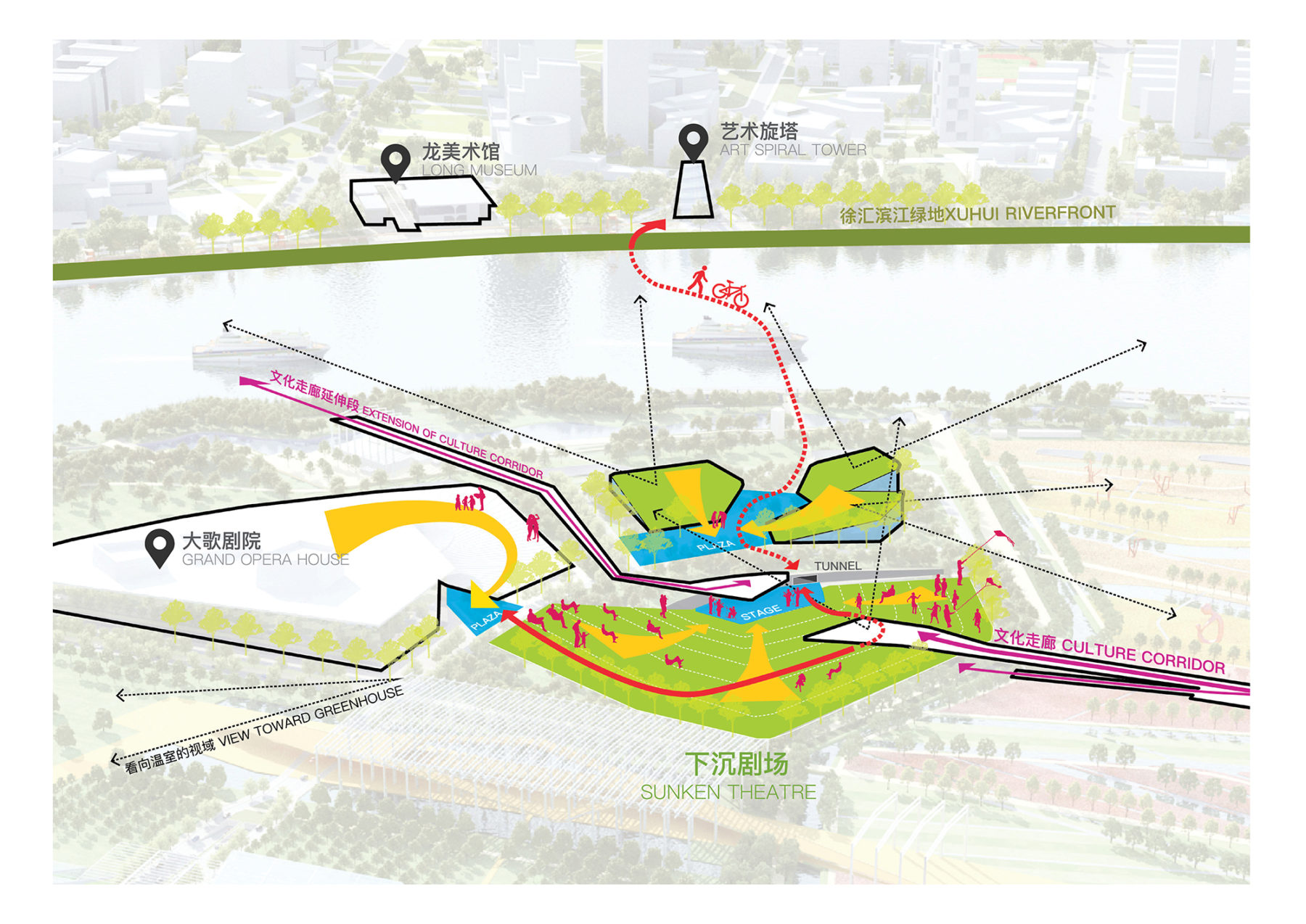
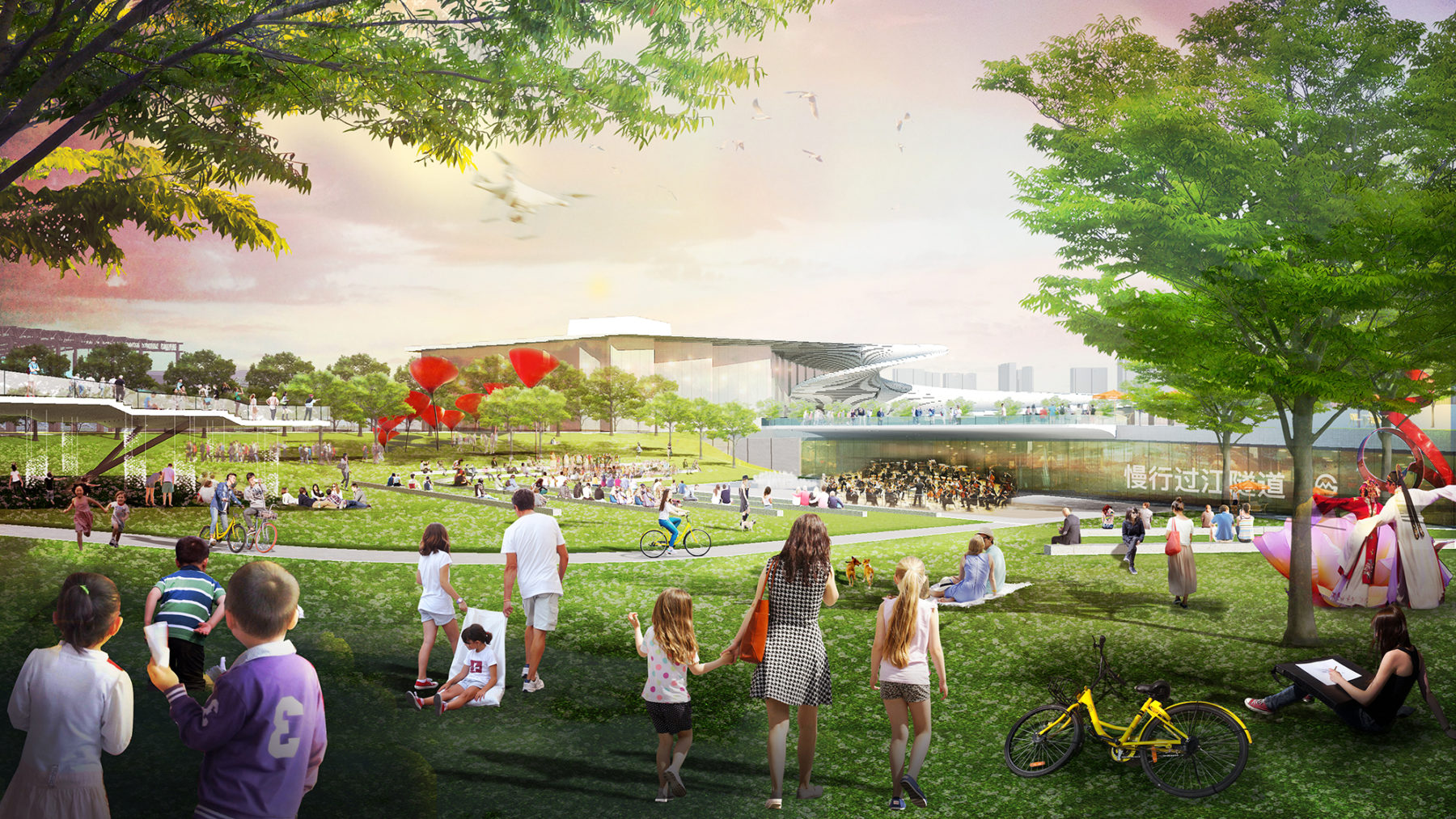
With its recent history as an industrial brownfield, the soil of the Houtan area is contaminated by heavy metals and organic solvents. To begin remediating the site, heavily contaminated soil was removed prior to the 2010 EXPO, while less contaminated soil and groundwater were left untreated. The design scheme for the park integrates a series of phytoremediation strategies into the spatial experience, including soil and groundwater remediation, stormwater management, and sewage treatment. It also adapts working landscapes to build green infrastructure in the vein of the “sponge city” concept.
Diverse plant communities are introduced not only to increase the user’s experience, but also to build a variety of wildlife habitats and serve as a valuable ecological patch in the heart of the city. This comprehensive ecosystem extends beyond the park, becoming part of the neighboring green belt, and influencing the city’s urban fabric. These ecological strategies, which are rarely integrated in Chinese urban landscape projects, represent the pioneering edge of landscape design in China.
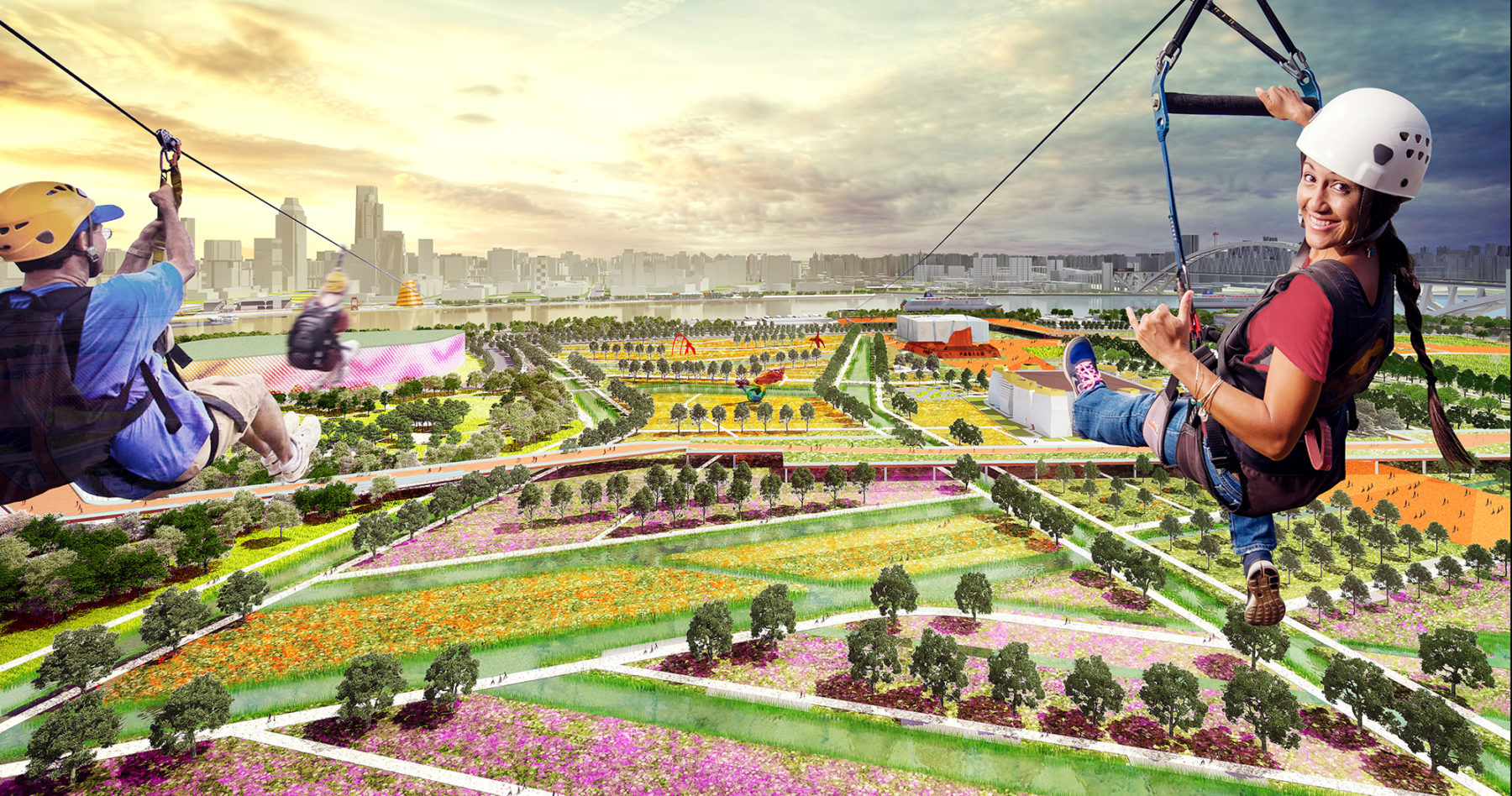

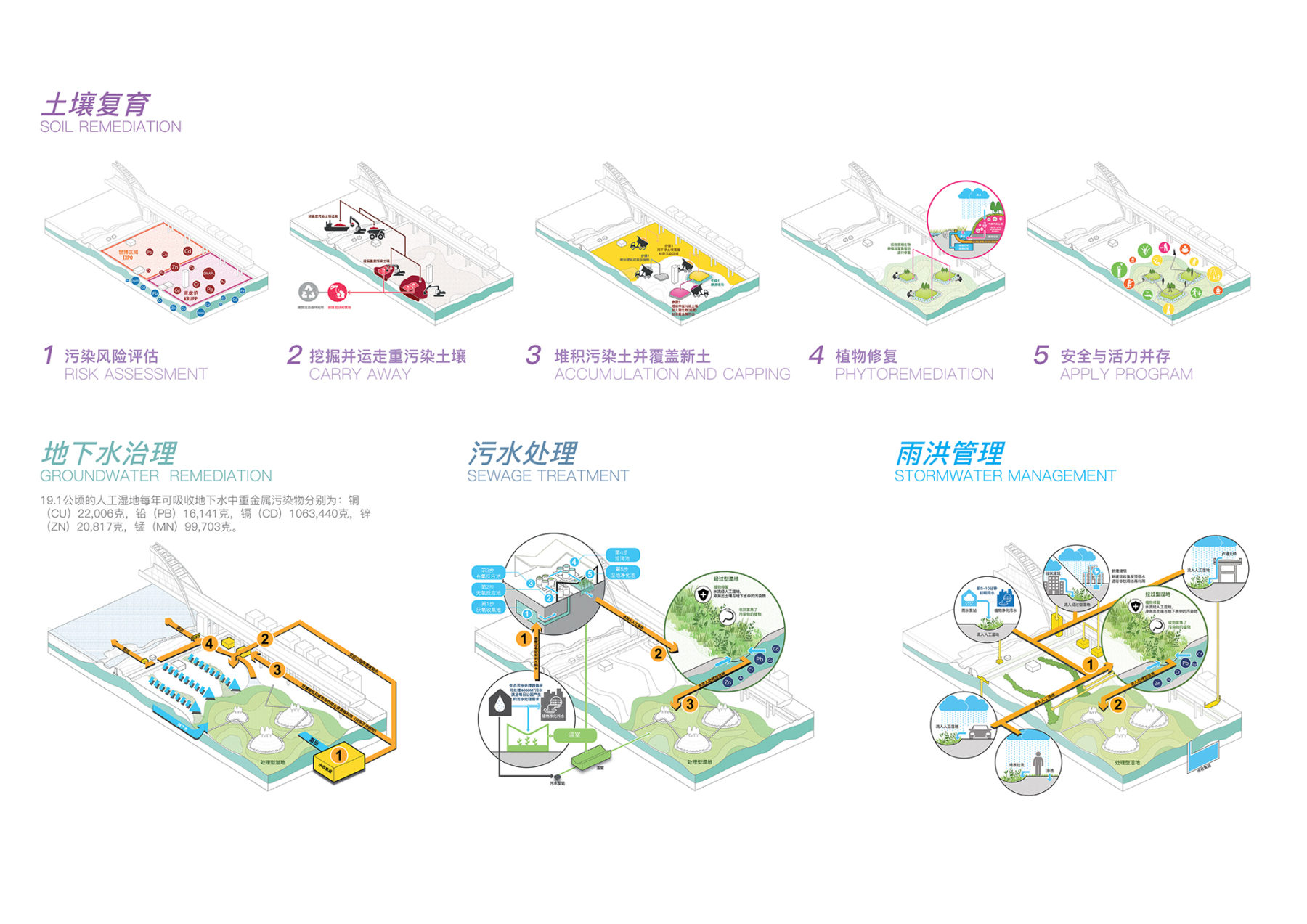
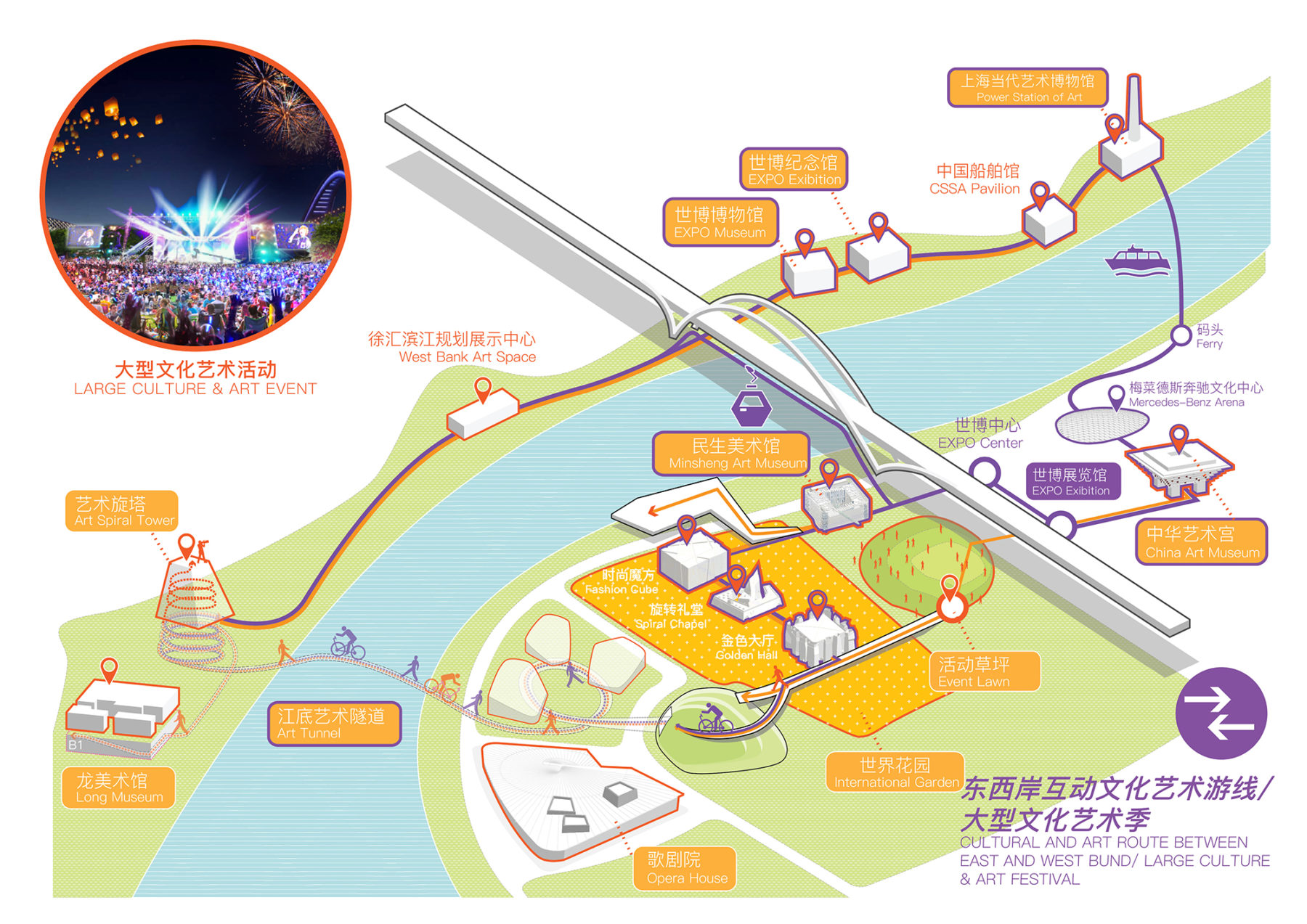
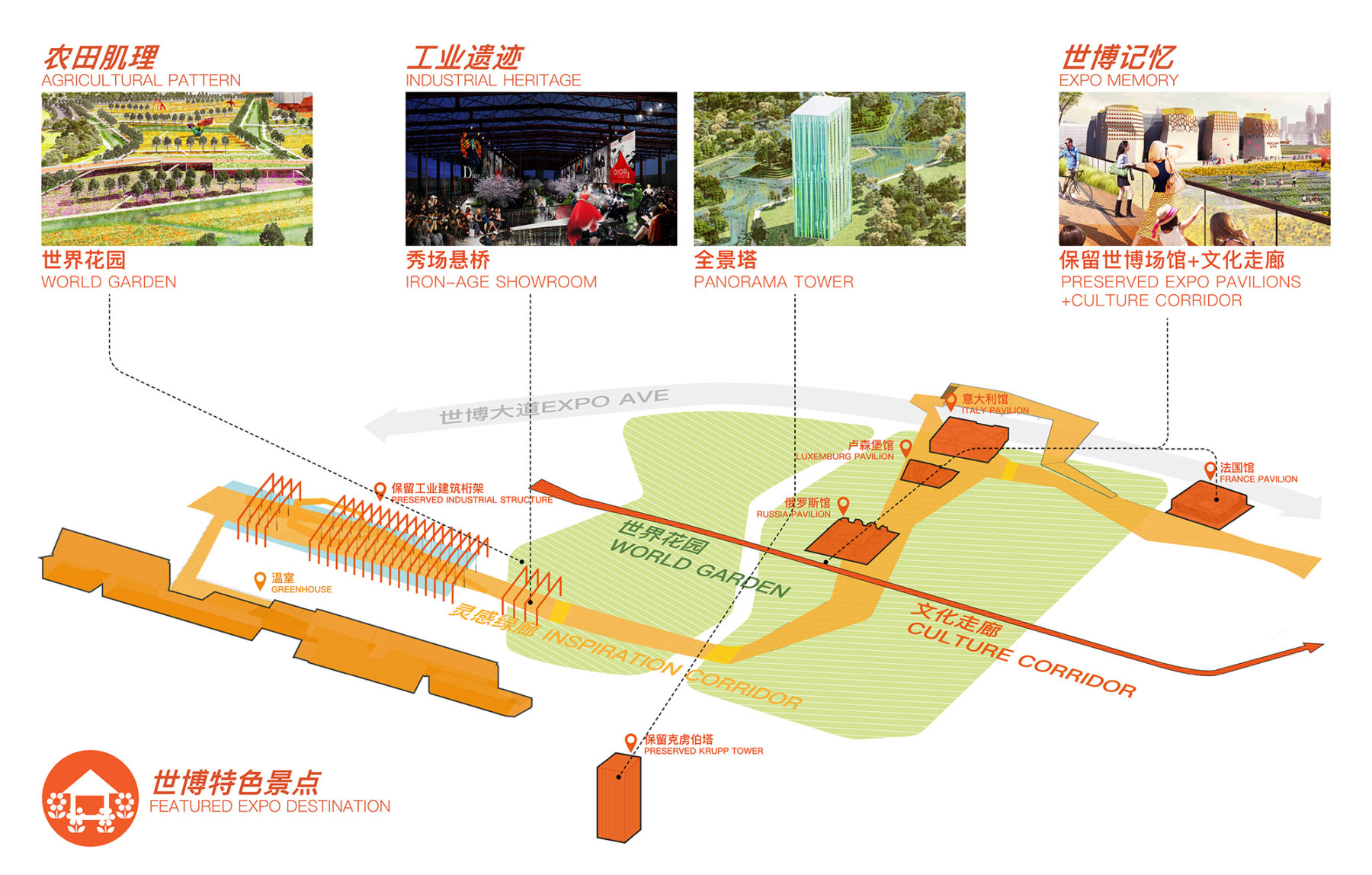
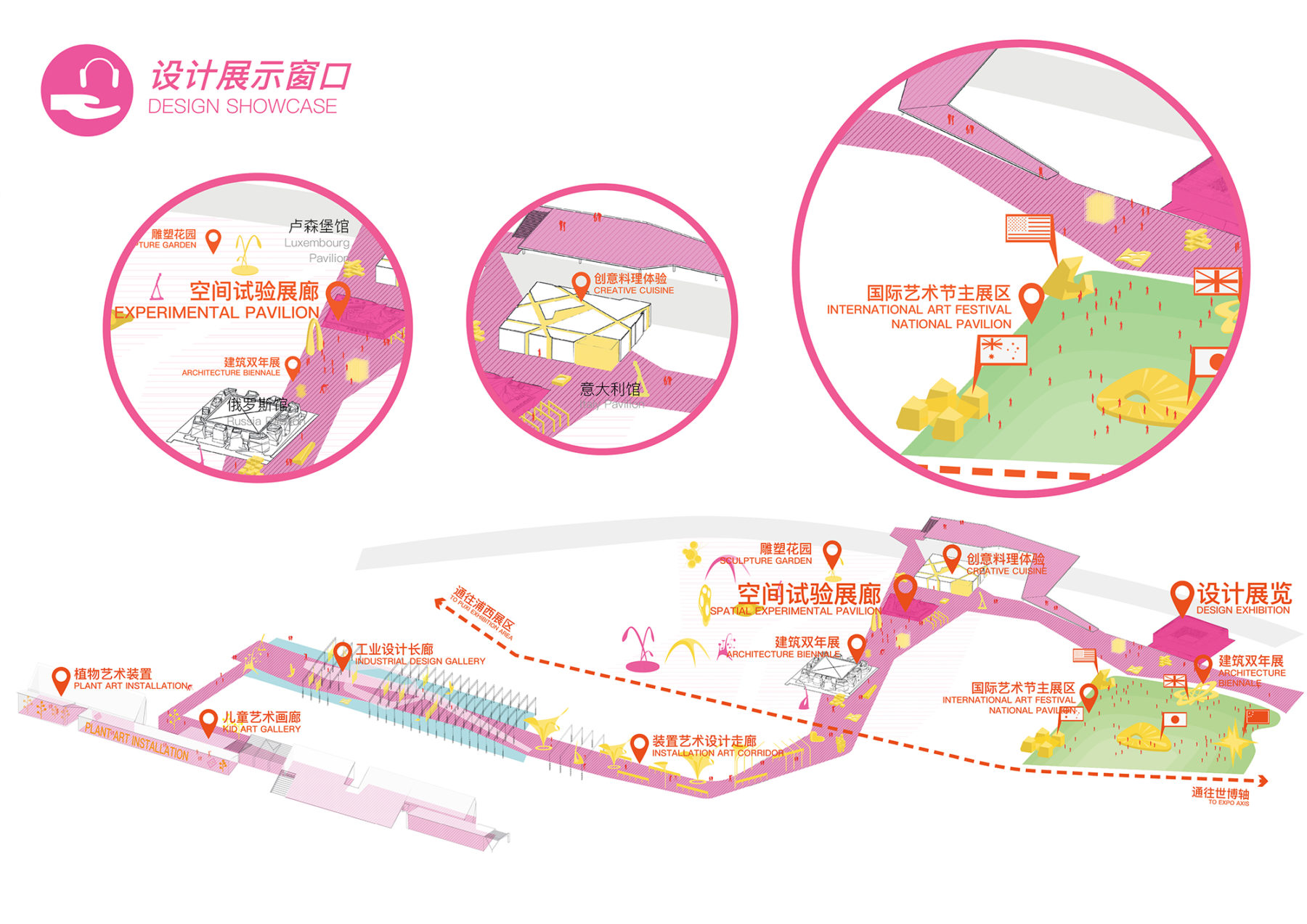
Carrying on the site’s legacy as the location of the Shanghai EXPO was an important design driver. Embracing the EXPO’s slogan, “better city, better life,” the design aims to create a new brand that represents the urban cultural life of present-day Shanghai. Cultural destinations, such as the Long Museum and the China Pavilion, as well as features on both banks of the Huangpu River, are linked into an arts and culture route via a proposed pedestrian and bicycle tunnel under the river.
In a broader sense, the park itself is designed as an “EXPO Forest,” bringing trees, shrubs and herbaceous plants from different parts of the world, increasing the plant and biodiversity. Magnolias, Shanghai’s city flower, are planted along major park corridors to highlight the city’s character. Four pavilions from the EXPO are repurposed for new programs and are connected with other feature buildings in the park via the Inspiration Corridor, enabling important cultural memories from Shanghai’s past to live on.
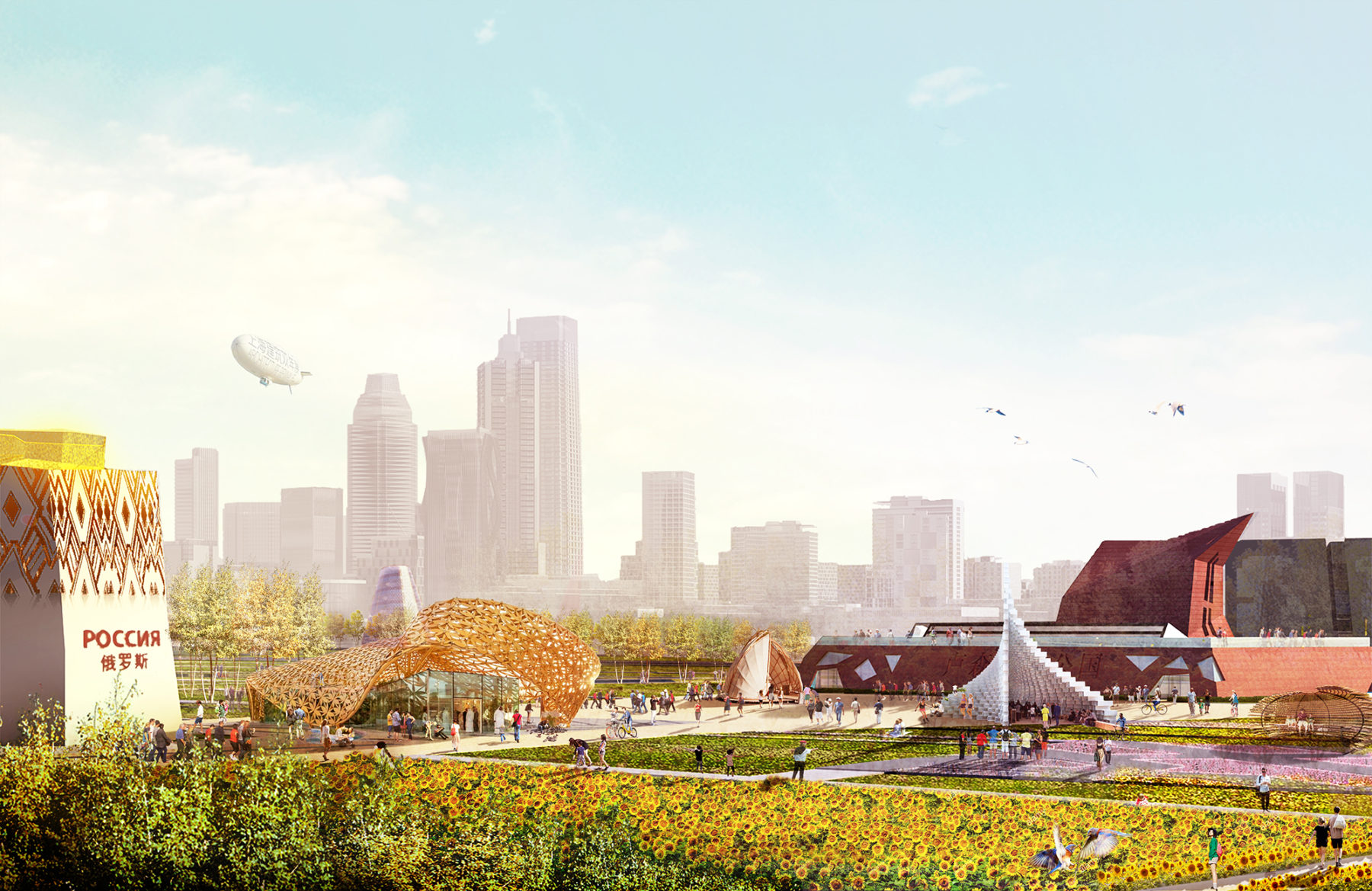
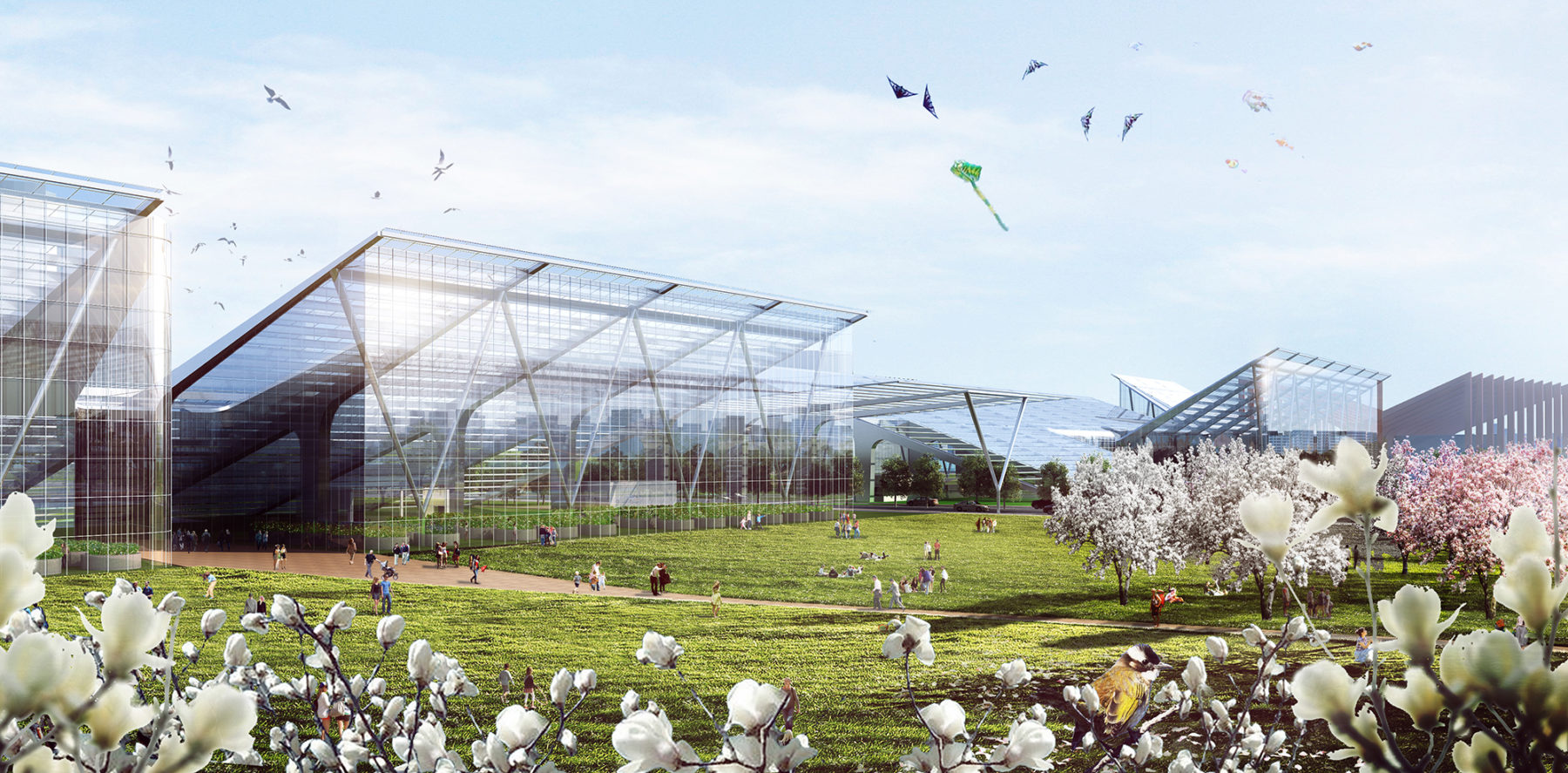
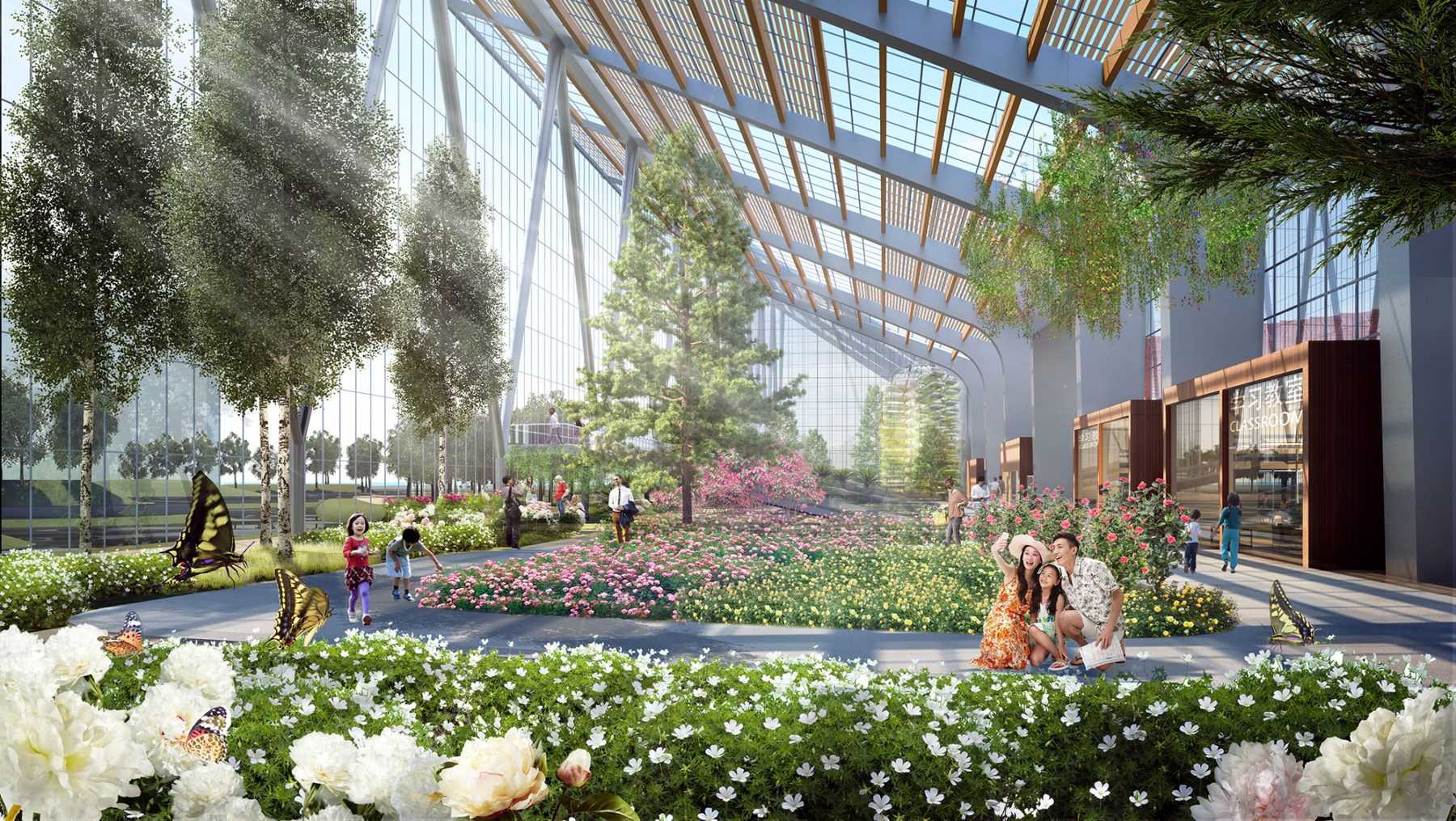
As another expression of the EXPO spirit, the Inspiration Corridor essentially transforms the entire park into a stage. This corridor connects the preserved pavilions, a showroom converted from a factory building, and an innovative living greenhouse—providing flexible indoor and outdoor platforms for technology education, design exhibition, and cultural exchange, and serving as the primary gathering space for the city of Shanghai. Along the corridor, four preserved pavilions are now transformed into main exhibition spaces to showcase the best from industry innovations.
By adding multiple layers of platform space to the existing industrial structure, the Iron-Age Showroom is proposed to be Shanghai’s most featured fashion stage and exhibition place for large-scale art installations. The greenhouse is not only a place to display plants from around the world, but also a space to demonstrate the latest urban agricultural and ecological technology. The botanic display area will show well-known fairy tale scenes from other countries, blending the latest in technology with the rich cultural past.
